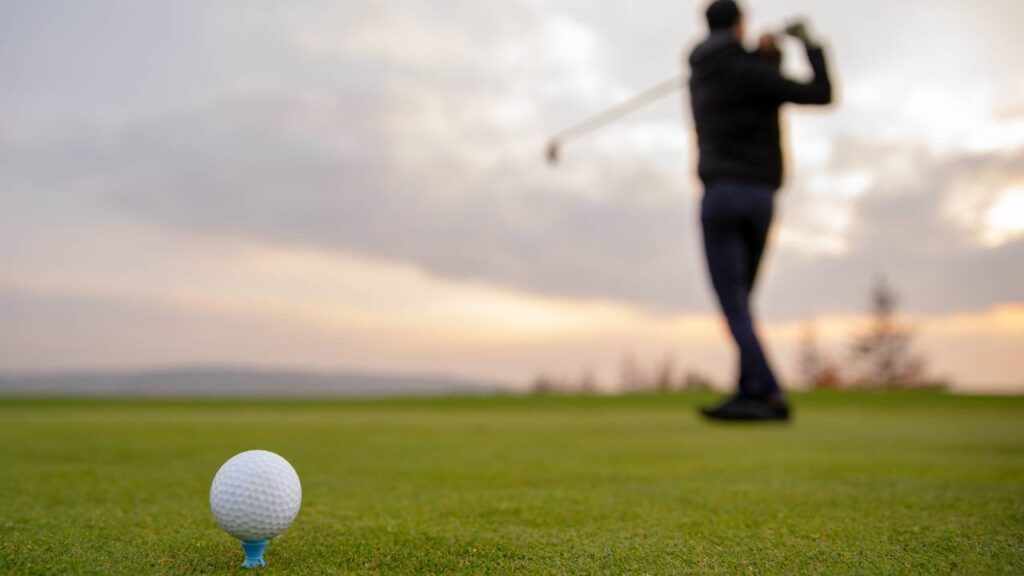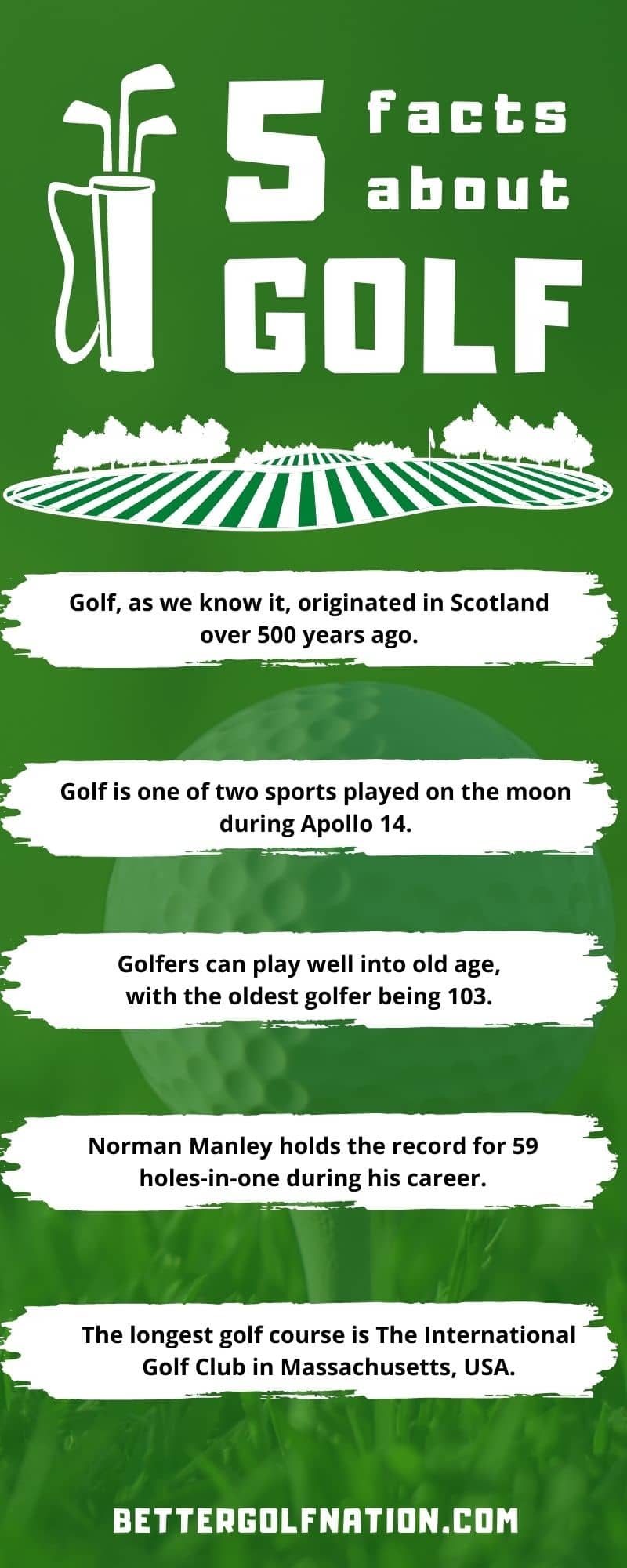Fading to Perfection: Mastering What Is a Fade in Golf
A fade in golf is a shot that curves slightly from left to right (for right-handed golfers) and is useful when there are obstacles on the left side of the fairway or when a soft landing on the green is desired. It is achieved by having a slightly open clubface at impact and an outside-to-inside swing path. Understanding how to hit a fade can enhance your versatility and shot selection on the golf course.

The slightest change in your swing can drastically affect the outcome of your shot. One term you may have heard while playing golf is “fade”. But what exactly does it mean to hit a fade in golf?
A fade in golf is a type of shot that curves slightly from left to right for right-handed golfers (or from right to left for left-handed golfers). It’s typically used when there’s an obstacle or hazard on the left side of the fairway, or when you want to land your ball softly on the green.
The opposite of a fade is called a draw, which curves from right to left for right-handed golfers (or from left to right for left-handed golfers). The main difference between hitting a draw and hitting a fade comes down to the direction the clubface is pointing at impact.
When hitting a draw, the clubface is closed slightly, which causes the ball to spin from right to left (for right-handed players). Conversely, when hitting a fade, the clubface is slightly open at impact, causing the ball to spin from left to right.
"The opposite of a fade is called a draw, which curves from right to left for right-handed golfers (or from left to right for left-handed golfers). The main difference between hitting a draw and hitting a fade comes down to the direction the clubface is pointing at impact."
So what causes a fade? Typically, it’s due to an outside-to-inside swing path or an open clubface at impact. This means that as you swing through the ball, your clubhead will be traveling toward your body rather than away from it, creating a side spin effect on your ball. There are benefits and drawbacks to using both fades and draws in your game.
For example, if you’re trying to hit around an obstacle on one side of the fairway or green, then fading may be more effective as it will curve away from that obstacle. On the other hand, draw shots are generally longer but require greater accuracy.
Overall, understanding how fades work can help you become a more versatile player, allowing yourself options depending on the situation and course design. Now that we know what fades are, let’s explore how to hit a fade in golf.
What is a Fade in Golf?
When it comes to golf, there are many different shots that you can hit. The two most popular shots that many golfers strive to master are the draw and the fade. Today, we’ll be focusing on the fade shot: what it is, how it’s different from a draw, and some tips for hitting it.
What is a fade in golf?
A fade is a type of shot that curves slightly from left to right (assuming you’re a right-handed golfer). It’s caused by an intentional side spin on the ball as it leaves the clubface. Unlike a slice, which is an unintentional shot that often veers off course, a fade is something that skilled golfers can use intentionally to control their ball flight.
So how do you hit a fade in golf?
There are a few things you need to keep in mind. First and foremost, your swing path needs to be slightly more outside-in than usual. This means that as you swing through the ball, your club will approach it from outside the target line before curving back toward it. This helps impart the necessary side spin on the ball.
Another key element of hitting a good fade is your grip pressure. You want to make sure that you’re not squeezing too tightly with your hands – this can make it more difficult to control your clubface and create the necessary side spin. Instead, focus on keeping a light grip and allowing your wrists to release naturally through impact. Remember that hitting a good fade takes practice!
Don’t get discouraged if your first attempts don’t produce perfect results; keep experimenting with different swing paths and grip pressures until you find what works best for you. Understanding the difference between draws and fades can help elevate your game and give you more control over where your shots end up on the course.
So why not give hitting a fade in golf a try? With some practice and perseverance, this shot could become a valuable weapon in your arsenal.
Enjoying this article? Read more:

Benefits of a Fade in Golf
If you’re an avid golfer, you’ve probably heard of the fade shot. It’s a popular technique that can be used to hit the ball with a soft curve to the right for right-handed golfers and to the left for left-handed golfers. While drawing the ball may be more popular, there are still several benefits to using a fade in your game.
One of the main benefits of a fade in golf is increased accuracy. When hitting a straight shot or even a draw, it can be challenging to pinpoint exactly where the ball will land. However, with a well-executed fade, you’ll have much more control over the direction and placement of your shot. Fades tend to have less spin than draws, which can help keep your ball from veering off-course in windy conditions.
The reduced spin also results in longer distances on your shots since there isn’t as much spin slowing down their flight. Another advantage of using fades is that they can help you avoid obstacles on the course. If there’s a tree blocking your path to the green or a water hazard nearby, hitting a controlled fade can give you just enough lift and curve to navigate around them successfully. Mastering how to hit a fade in golf allows players more versatility on their shots, which makes it an essential skill for any golfer looking to up their game.
Being able to navigate various conditions will make playing rounds at different courses much easier because you won’t be limited by what lies ahead. Overall, while fades may not get as much attention as draws do on TV broadcasts or social media posts from amateurs – they are still an essential part of any golfer’s arsenal that should not be overlooked if they’re serious about improving their game.

How to Hit a Fade in Golf
When it comes to hitting a fade in golf, there are several things to keep in mind. To hit a fade in golf, you’ll want to take an open stance with your feet slightly wider than shoulder-width apart. This means that your front foot should be closer to the target line than your back foot. When you address the ball, aim slightly left of your target (again, for right-handed golfers).
This will help set up the proper path for hitting a fade. As you begin your swing, make sure your club face is slightly open at impact. This will cause the ball to spin left-to-right and produce that beautiful fading shot shape. To achieve this position at impact, try rotating your lead hand slightly counter-clockwise so that you see more of its knuckles at address.
Another key aspect of hitting a good fade in golf is controlling your swing path. You want your clubhead to be moving slightly out-to-in through impact; this promotes more spin on the ball, which helps create the desired shape.
One drill that can help with this is using the Swing Align training aid, which keeps arms and body connected throughout the entire swing. It’s also important not to overdo it when trying to hit a fade in golf; just like with any shot shape or technique change, there’s always a risk of going too far down one path and losing control over what happens with our shots – so practice smartly and gradually introduce one change at a time before combining them all together into one fluid motion on the course!
Draw vs Fade: Understanding the Differences
Understanding the differences between a fade and a draw in golf can be tricky, especially for beginner golfers. While both shots curve the ball, they have different definitions and causes. The main difference between a fade and a draw is the direction in which the ball curves. A fade is when the ball curves to the right (for right-handed golfers), while a draw is when it curves to the left.
The direction of the curve depends on whether you’re hitting a shot as a left or right-hander. The causes of fades and draws are also different. A fade is caused by an open clubface at impact, meaning that the face of your club points slightly to the right of your target line when you hit it. Meanwhile, a draw is caused by a closed clubface at impact – where the face of your club points slightly to the left of your target line when you hit it.
"While both shots curve the ball, they have different definitions and causes. The main difference between a fade and a draw is the direction in which the ball curves."
It’s important to understand the difference between these shots because knowing how to hit both will give you more options on how to play certain holes on any given course. For example, if there’s water on your right side and you tend to slice or push your shots, it might be better for you to aim for a fade instead.
To hit both shots effectively, there are certain tips and techniques that can help you achieve your desired ball flight. Swing Align training aids can help improve consistency in shot shape by helping with alignment issues that lead to poor contact with each swing.
Understanding the difference between fades and draws in golf is essential for any golfer looking to improve their game. Knowing which shot shape suits each situation can also help save strokes on difficult holes throughout any round.

Advanced Techniques: Shaping Your Shots
Once you have mastered the basics of hitting a fade in golf, you may want to take it to the next level by shaping your shots. Shaping your shots refers to intentionally curving the ball in a certain direction. This technique requires a lot of skill and practice, but it can give you an edge over other golfers. To shape your shot, you need to understand the difference between a draw and a fade.
A draw is when the ball curves from right to left (for right-handed golfers), while a fade is when the ball curves from left to right. Once you understand this difference, you can start experimenting with how much fade or draw you want on your shots. One important thing to remember is that shaping your shots should not be used as a fix for bad swings or slices. If you are struggling with slicing or hooking the ball, it is best to focus on fixing those issues before attempting to shape your shots.
To hit a fade in golf that curves more than usual, try opening up your stance slightly and aiming more to the left of your target (for right-handed golfers). This will help create an outside-to-inside swing path, which will put more spin on the ball and cause it to curve more.
"One important thing to remember is that shaping your shots should not be used as a fix for bad swings or slices."
You can also experiment with changing your grip or adjusting your clubface angle at impact. Another technique for shaping shots is swing alignment. Swing Align is a training aid that helps golfers perfect their swing plane and alignment. By using this tool, you can train yourself to hit fades or draws consistently and accurately.
Overall, shaping your shots takes time and effort but can be very rewarding once mastered. Remember that consistent practice is key in all aspects of golf!
Common Misconceptions About Fades
One of the most common misconceptions about fades is that they are bad shots. Many amateur golfers believe that a fade is a sign of a poor swing and that they should always aim to hit a draw. However, this couldn’t be further from the truth. In fact, some of the best golfers in history have relied on the fade as their go-to shot.
Another misconception is that a fade is just another word for a slice. While it’s true that both shots curve to the right for right-handed golfers (and left for lefties), there are some key differences between them. A slice is usually caused by an outside-in swing path and an open clubface at impact, which produce excessive spin on the ball and send it flying off course. A fade, on the other hand, is intentionally created by swinging slightly out-to-in and with an open clubface at impact.
This produces less spin and more control over the direction of the ball. Some golfers also believe that hitting draws means hitting longer shots, while hitting fades means sacrificing distance. While it’s true that draws have more roll than fades due to their sidespin, both shots can travel long distances with proper technique and equipment. It all comes down to personal preference and playing conditions.
Many amateur golfers think that it’s impossible to shape their shots and hit fades or draws consistently without expensive equipment or years of practice. While having high-quality gear certainly helps, anyone can learn how to shape their shots with enough dedication and practice drills tailored to their swing style.
Overall, fades are not bad shots or inferior to draws – they’re simply different ways of achieving your desired ball flight pattern based on your skills and playing conditions. Don’t be afraid to experiment with both types of shot shapes in your next game!

Improving Your Fade: Practice Drills and Tips
Hitting a consistent fade shot in golf is all about practice and getting your swing technique right. One of the best ways to improve your fade shot is to first understand the causes that make it happen.
A fade is when the ball curves slightly from left to right (for a right-handed golfer) and usually happens when the clubface is open relative to the swing path at impact. A slice, on the other hand, is a harder curve that starts left of your target line and slices hard to the right.
The key difference between a fade and a slice shot is that while both move from left to right, fades are more controlled and don’t veer too far off-course. One useful tip for improving your fade shot in golf is learning how to hit with an open clubface at impact.
This means keeping your wrists square instead of rotating them over during impact, which will help you control how much curve you put on the ball. You can also try using alignment sticks or Swing Align training aids to guide you through proper swing mechanics and help train your body’s muscle memory.
"The key difference between a fade and a slice shot is that while both move from left to right, fades are more controlled and don’t veer too far off-course."
Another helpful practice drill for honing your fade shot involves using different clubs for each shot while focusing on hitting cuts or fades consistently with each one. For example, try hitting five shots with a pitching wedge, then five with a 9-iron, five more with an 8-iron, etc., until you’ve worked through every club in your bag. Click here to read what is a wedge.
Varying clubs help you get comfortable hitting different types of shots with different loft angles. One great way to improve any type of golf shot, including fading, involves playing rounds of golf against better players than yourself or joining leagues where there’s competition.
Playing against better players challenges you mentally, thus improving your focus and enabling you to learn how to hit accurate fades consistently under pressure. If you want to improve your fade in golf, then practice drills and tips are the way to go.
Whether it’s working on your swing technique, using training aids, hitting different clubs, or playing against better players, there are many ways you can improve your game. Remember that consistency is key, and never forget to have fun while practicing your shots!
Conclusion
Understanding how to hit a fade in golf can be an incredibly useful tool for any golfer.
Whether you’re looking to avoid trouble on the course or simply add another shot to your arsenal, the fade can help you achieve your goals. By understanding the difference between draw and fade, you’ll be able to shape your shots with greater accuracy and consistency.
Remember that a slice is not the same as a fade. While both shots move left-to-right for right-handed players, the causes and solutions are different. A slice is caused by an outside-to-in swing path and an open clubface at impact, while a fade is achieved through proper setup, swing plane, and clubface angle. If you’re struggling with your fades (or any other aspect of your golf game), don’t get discouraged!
There are many tips and drills available online or through professional instructors that can help improve your skills. Consider investing in tools like Swing Align to help you practice more effectively. Keep in mind that golf is meant to be fun! Don’t let frustration or disappointment get in the way of enjoying this great game.
With patience, persistence, and a positive attitude, anyone can learn how to hit a draw and fade like a pro. So get out there on the course and give it your best shot!
Share this Post
Toni Benedito
Keep Reading
Follow Us
Recent Posts

How Do Pro Golfers Get Paid? The Business of Golf
Professional golfers get paid both before and after tournaments. Before a tournament, they receive appearance fees, sometimes exceeding $1 million, to attract top players. After the tournament, earnings depend on their placement, with the PGA

How Much Do Golf Players And Pros Make? You Won’t Believe It!
Professional golfers earn substantial incomes through tournament winnings, sponsorship deals, and endorsements. Top players on the PGA Tour can make millions annually, with significant earnings from prize money and lucrative brand partnerships. For example, Rory

The Shocking Cost: How Much Does It Cost to Fly with Golf Clubs?
Flying with golf clubs can be a hassle, but it’s worth it for avid golfers. Costs vary by airline, ranging from $30 to $150 per way. Southwest Airlines offers a generous policy, allowing one set

Why Do Golfers Tape Their Fingers Before Hitting the Course?
Golfers tape their fingers to prevent injuries from repetitive motions, provide support for existing injuries, and improve grip comfort. It’s a popular technique among amateurs and pros alike, offering a lightweight and effective solution compared

How Much Does a Round of Golf Cost? Are You on Par?
The cost of a round of golf varies widely based on factors like course type, location, and time of play. Public courses typically range from $30-$100 per round, while exclusive ones like Augusta National or

Hidden Fees: How Much Does It Cost To Rent a Golf Cart
Wondering how much it costs to rent a golf cart? Explore factors like location, rental duration, and cart type impacting prices. Daily rates range from $50 to $80, while weekly rentals can vary from $200
Table of Contents







